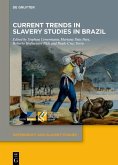High Quality Content by WIKIPEDIA articles! Slavery in Brazil shaped the country's social structure and ethnic landscape. During the colonial epoch and for over six decades after the 1822 independence, slavery was a mainstay of the Brazilian economy, especially in mining and sugar cane production. Brazil obtained 35.4% of all African slaves traded in the Atlantic slave trade, more than 3 million slaves were sent to Brazil to work mainly on sugar cane plantations from the 16th to the 19th century. Starting around 1550, the Portuguese began to trade African slaves due to two main reasons: The unenculturated indigenous peoples deteriorated rapidly, and became increasingly warier of the Portuguese, thus, obtaining new indigenous slaves was becoming harder and harder. The Portuguese Empire, at the time, controlled some stages within the African slave trade's commercial chain, thus, providing the Brazilian landholders with the opportunity to import slaves from Portuguese trading posts in Africa.







